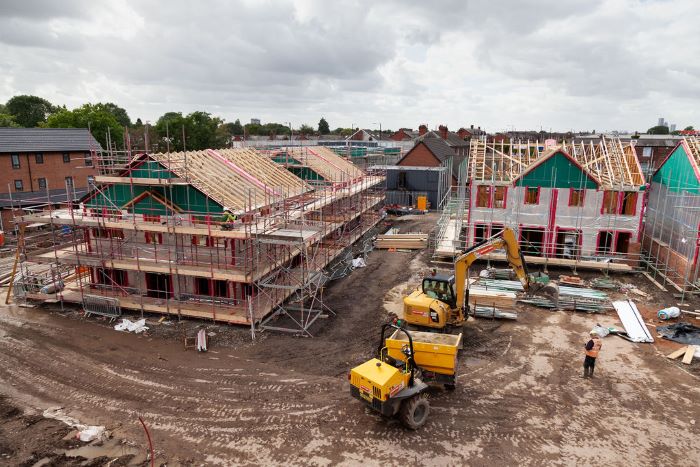LOCKDOWN / SITE CLOSURE – EXTERNAL BREATHER MEMBRANE ADVICE

During these unprecedented and challenging times where, numerous construction sites are closed and in lockdown until further notice, there is potential that buildings are not complete with the final façade unfinished, therefore leaving the structure exposed. Following the guidance issued by the Structural Timber Association (STA) earlier this week, which stated that any Structural Timber Frame left in lockdown for more than a month should have protection applied to it, Glidevale Protect would like to take the opportunity to offer some guidance with reference to any external breather membranes that are currently exposed on-site.

Reflective breather membranes
Reflective surfaces on breather membranes rely on their surface emissivity for maximum thermal performance if used as part of the thermal assessment design. As per Structural Timber Association’s (STA) Advice Note 18, prolonged exposure of the external reflective breather membrane (above 6 to 12 weeks depending on the weather, conditions and location), to the agents of weathering, particularly salt spray environments, can detrimentally affect the overall emissivity of the surface and ultimately affect the thermal performance. In accordance with good building practice, our normal recommendations are that reflective breather membranes should be covered as soon as possible after installation and preferably not longer than one month after initial exposure. Our standard advice would be that if the exposure period exceeds one month and the membrane is damaged by high winds, UV exposure, incorrect handling or vandalism, the membrane should be repaired or replaced. Basing prolonged exposure as over 6 to 12 weeks as per STA Advice Note 18, our advice is that the membrane will require protection by covering if left for significant periods after this time. However, we understand that visiting the site may not be possible in the current circumstances. Therefore, our recommendation is to undertake a full survey and review of the breather membranes upon return to site. Any areas of damage or degradation will need to be replaced as per our standard fixing instructions. This includes any dullness or peeling of the foil on the reflective membranes and this should be either patched or replaced. Glidevale Protect’s technical department is on hard to support and advice on the best course of action going forward and can be contacted on the details below.
Non-reflective breather membranes & roofing underlays
Equally, non-reflective external breather membranes and roofing underlays left exposed for longer than the normal construction process times may be subjected to damage. Again, in accordance with good building practice, membrane clad structures should be covered as soon as possible after installation and preferably not more than one month after initial exposure. If the exposure period exceeds one month and the membrane is damaged by high winds, UV exposure, incorrect handling or vandalism, the membrane should be repaired or replaced, again the membrane needs to be inspected for damage and repaired as necessary prior to covering, upon return to site. Advice on the best course of action is similarly available from our technical department.
Glidevale Protect would like to reassure you that our membranes are tested using the same protocols and time frames as will have been used by all other manufacturers to meet the requirements set by NHBC, STA and TRADA, in accordance with BS EN 13859-1 and 2. The testing involves UVA age testing of the membrane for 336 hours (55MJ/m²) (no condensation) followed by 90 days (3 Months) of (dry) heat ageing at 70° Celsius. UVA ageing is used as part of the test as this is responsible for most polymer degradation at the damaging end of the sunlight spectrum.
Timber panels stored on site
All timber panels fitted with breather membranes which are stored on sites for prolonged periods and subjected to extensive weather exposure before being assembled should have appropriate weather protection. This is particularly important when the timber panels are stored horizontally. We would advise that a breathable membrane/vented tarpaulin is used to allow the timber frame to breathe and ensure there is no risk of interstitial condensation. A simple polythene membrane draped over would not be enough and could cause condensation build-up. This sacrificial layer will reduce the possibility of ponding water, damage by high winds or UV exposure. Should you require further advice, please contact our technical department on the details below.

For recommendations on managing exposure risk for the overall Structural Timber Frames left on-site, please contact the STA – www.structuraltimber.co.uk
For any further queries or reassurances, including requirements for membranes to support your sites, please contact the Glidevale Protect technical team on technical@glidevale.com or leave a message at 0161 905 5700.
